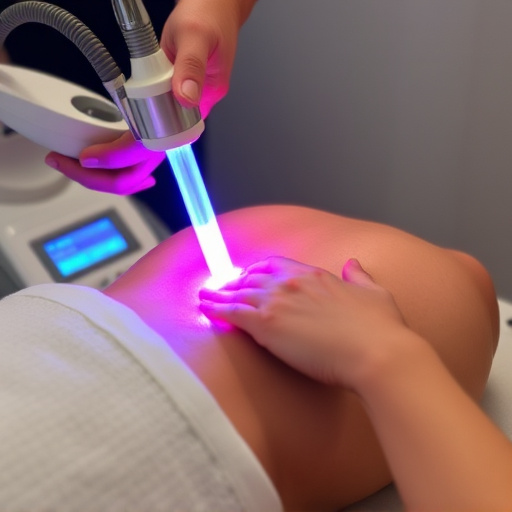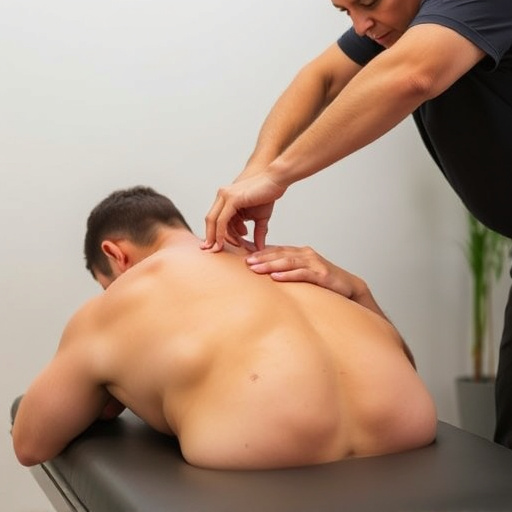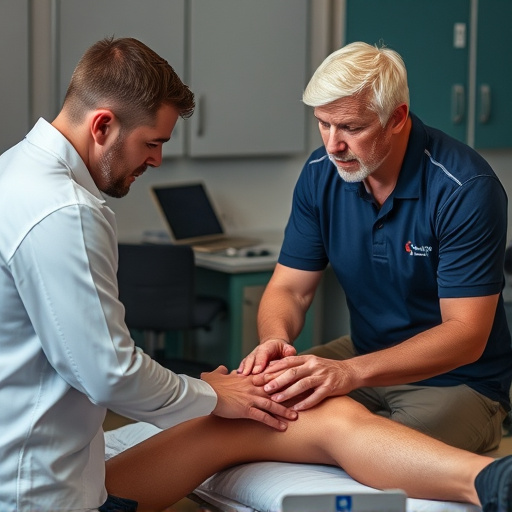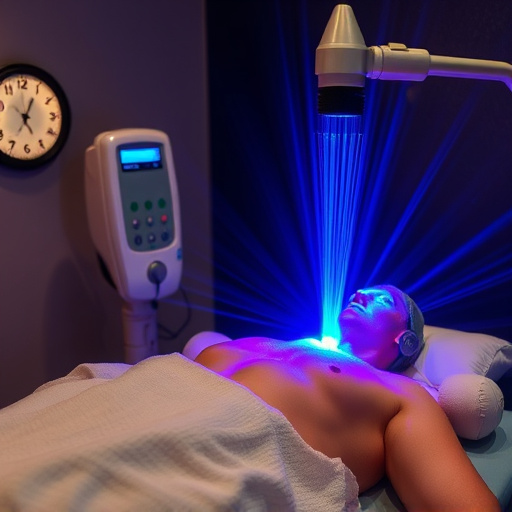Shockwave therapy for plantar fasciitis offers long-term pain relief and improved mobility up to a year after treatment. Non-invasive, it aids post-accident recovery by reducing inflammation and promoting tissue repair, accelerating recovery and enabling return to regular activities. Maintaining healthy weight, avoiding foot stress, supportive footwear, chiropractic care, and rehabilitation exercises prevent recurrence.
“Exploring the long-term benefits of shockwave therapy for plantar fasciitis, this article delves into the transformative potential of this non-invasive treatment. Beyond immediate relief, patients often experience significant pain reduction over time. Additionally, shockwave therapy demonstrates remarkable effects on restoring foot mobility and function. Furthermore, we uncover crucial strategies to prevent recurrence, offering a comprehensive guide for optimal management of plantar fasciitis. For those seeking lasting solutions, this insight into shockwave plantar fasciitis care is both enlightening and empowering.”
- Long-Term Pain Reduction After Shockwave Therapy
- Improved Mobility and Function in The Foot
- Prevention of Recurrence: Key Strategies Identified
Long-Term Pain Reduction After Shockwave Therapy

After undergoing shockwave therapy for plantar fasciitis, many patients experience significant long-term pain reduction. This non-invasive treatment has shown promising results in managing chronic pain associated with this condition. The high-energy shockwaves promote healing by stimulating tissue regeneration and breaking down scar tissues that contribute to the discomfort. Studies have indicated that a majority of patients report improved mobility and decreased pain intensity, even up to one year after treatment.
The effectiveness of shockwave therapy is particularly notable in post-accident rehabilitation, where it can play a crucial role in accelerating recovery. By reducing inflammation and promoting tissue repair, this innovative approach can help individuals regain their range of motion and return to their regular activities without the persistent pain that often follows traditional treatments.
Improved Mobility and Function in The Foot

After successful shockwave plantar fasciitis care, one of the most notable long-term outcomes is significantly improved mobility and function in the foot. The treatment disrupts the pain cycle by stimulating blood flow to the affected area, which aids in tissue repair and regeneration. This, in turn, leads to enhanced flexibility and strength in the foot and ankle, allowing individuals to engage in activities they previously found challenging or impossible due to the condition.
Individuals who have undergone shockwave therapy often report a reduction in symptoms similar to those seen in sciatica treatment or headache relief, as the procedure addresses the underlying causes of pain rather than merely masking them. Moreover, this improved mobility translates into better performance in sports and other physical activities, which is particularly beneficial for athletes recovering from plantar fasciitis that may have hindered their training and competition.
Prevention of Recurrence: Key Strategies Identified

To prevent recurrence of shockwave plantar fasciitis, several key strategies have been identified. Firstly, maintaining a healthy weight and avoiding excessive stress on the feet is crucial. Regular exercises focusing on strengthening the foot and calf muscles can also help alleviate tension and reduce strain on the plantar fascia. Proper footwear, including supportive shoes with adequate cushioning and arch support, plays a significant role in managing symptoms and preventing future issues.
Additionally, chiropractic treatment and injury rehabilitation techniques have shown promise in promoting healing and reducing pain. These methods aim to improve foot mechanics, enhance flexibility, and restore balance to the body. Incorporating these strategies into a comprehensive care plan can significantly decrease the likelihood of recurrence, providing much-needed headache relief for patients managing shockwave plantar fasciitis.
After exploring the long-term outcomes of shockwave plantar fasciitis care, it’s evident that shockwave therapy offers a promising path to lasting relief. While reducing pain and improving foot mobility are immediate benefits, the key to preventing recurrence lies in adopting specific strategies identified in this article. By combining shockwave treatment with targeted lifestyle changes and management techniques, individuals can achieve not only symptom alleviation but also long-term health and function for their feet. This comprehensive approach ensures that folks can get back to enjoying their daily activities without the constant burden of plantar fasciitis pain.














